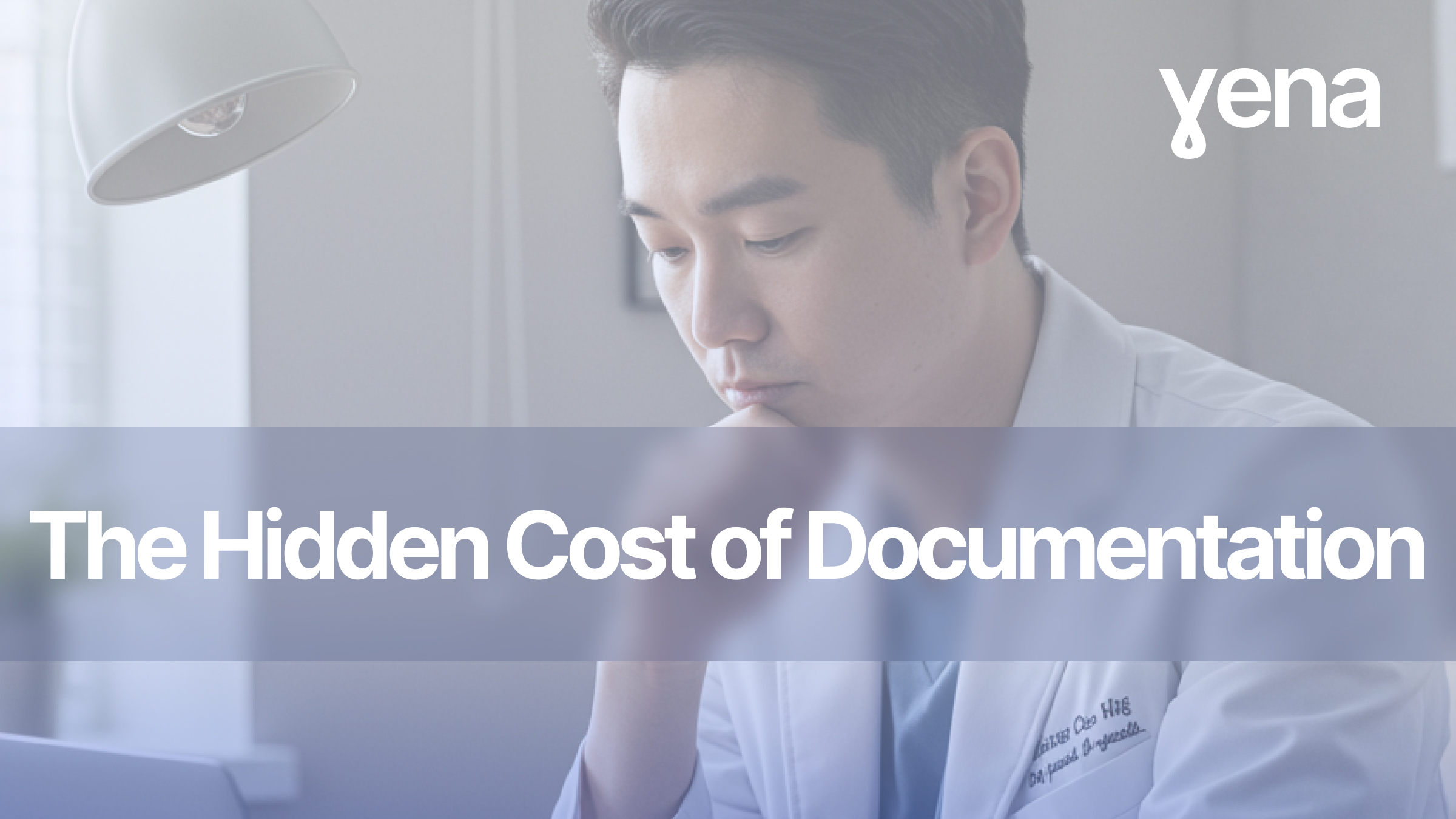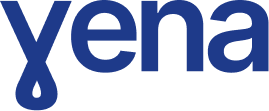
The Hidden Cost of Documentation: How AI Scribes Help Physicians Reclaim Their Time
The Documentation Crisis in Healthcare
Healthcare providers today face an unprecedented documentation burden. What was once a minor part of clinical practice has evolved into a time-consuming obligation that significantly impacts physician wellbeing and patient care quality.
Recent research paints a concerning picture:
-
Physicians spend an average of 5.8 hours per 8-hour workday actively working in Electronic Health Record (EHR) systems, with documentation consuming the largest portion at 2.3 hours per day (Han et al., 2019).
-
Primary care physicians face an even heavier burden, spending over 7.3 hours per 8-hour workday on EHR-related tasks (Springer, 2024).
-
According to the CDC's National Electronic Health Records Survey, 91% of office-based physicians spent time outside normal office hours documenting clinical care in 2019, with 32.6% spending more than 2 hours daily on after-hours documentation (CDC, 2021).
-
Post-pandemic EHR time has increased by nearly 8% compared to pre-pandemic levels (Medical Economics, 2024).
This documentation burden doesn't merely represent time lost—it translates to significant financial costs and contributes heavily to the burnout epidemic affecting healthcare professionals nationwide.
The Economic Impact of Documentation Burden
Financial Costs to Healthcare Systems
The economic impact of documentation burden extends far beyond the obvious time constraints:
-
Physician burnout, largely driven by administrative tasks like documentation, costs the U.S. healthcare system an estimated $4.6 billion annually due to physician turnover and reduced clinical hours (AMA, 2024).
-
The cost of replacing a single physician due to burnout ranges from $500,000 to $1 million or more, depending on specialty (AMA, 2024).
-
Burnout leads to decreased productivity, increased medical errors, and reduced patient satisfaction—all of which have downstream financial implications for healthcare systems.
The Hidden Cost to Individual Physicians
For individual physicians, the cost manifests in both financial and personal terms:
-
Time spent on documentation is time not spent seeing patients, directly impacting potential revenue.
-
Extended workdays reduce quality of life and contribute to burnout, with 48.2% of physicians reporting at least one symptom of burnout in 2023 (AMA, 2024).
-
The opportunity cost of documentation time is substantial—hours that could be invested in patient care, professional development, or personal wellness.
The AI Scribe Solution: Reclaiming Physician Time
AI-powered medical scribes like Vena offer a promising solution to this growing crisis. By automating the documentation process, these tools help physicians redirect their focus toward what matters most: patient care.
Quantifiable Benefits of AI Scribes
Research and market analysis suggest that AI scribes offer substantial benefits:
-
Time Savings: AI scribes can save physicians 2-3 hours daily on documentation tasks, allowing them to see more patients or improve work-life balance.
-
Financial Returns: By enabling physicians to see additional patients, AI scribes can potentially increase daily revenue by approximately $750 per physician, translating to an annual increase of $125,000 to $200,000 in income per doctor (DeepCura, 2024).
-
Cost Efficiency: AI scribes typically cost $10,000 to $39,000 annually—significantly less than the $55,000+ annual cost of human scribes, representing potential savings of 60-75% (DeepCura, 2024).
-
Reduced Burnout Risk: By alleviating the documentation burden, AI scribes can help reduce burnout risk, potentially saving healthcare systems the substantial costs associated with physician turnover.
How Vena Transforms the Documentation Experience
Vena's AI-powered medical scribe platform was designed specifically to address the documentation crisis facing healthcare providers. Our approach centers on three key steps:
1. Create
Start by creating a new session for a patient visit. Our patient management system tracks context across multiple sessions, making it easy to reference past information and build comprehensive records without redundant data entry.
2. Transcribe
Use Vena's advanced voice recognition technology to transcribe and dictate notes hands-free from anywhere in your workflow. Our system is specifically trained on medical terminology for superior accuracy in various clinical environments.
3. Generate
Leverage our AI to automatically generate comprehensive medical documentation that adapts to your style and preferences. With Vena's custom template editor, you can ensure documentation sounds just like you—maintaining your unique voice while saving precious time.
Beyond Time Savings: Additional Benefits
While time savings represent the most immediate benefit, Vena offers additional advantages that extend beyond documentation efficiency:
-
Enhanced Patient Care: With less time spent on documentation, physicians can focus more on patient interaction, potentially improving care quality and satisfaction.
-
Improved Work-Life Balance: Reduced after-hours documentation means more time for personal activities and recuperation, potentially mitigating burnout risk.
-
Better Documentation Quality: AI assistance can help ensure more comprehensive, consistent documentation that improves care continuity and potentially optimizes billing.
The Path Forward
The documentation burden in healthcare represents a systemic challenge that requires innovative solutions. AI-powered scribes like Vena offer a promising path forward—a way to reclaim physician time while maintaining or even improving documentation quality.
As healthcare continues to evolve, those organizations and individual providers who embrace these technologies may find themselves at a distinct advantage—able to deliver better care with less administrative burden and potentially better financial outcomes.
To learn more about how Vena can help your practice reduce documentation burden and reclaim valuable clinical time, visit our features page or schedule a demo today.
References:
-
Han S, Shanafelt TD, Sinsky CA, et al. (2019). Estimating the Attributable Cost of Physician Burnout in the United States. Annals of Internal Medicine, 170(11):784-790.
-
National Comparison of Ambulatory Physician Electronic Health Record Use Across Specialties. (2024). Journal of General Internal Medicine.
-
CDC. (2021). QuickStats: Distribution of Hours per Day That Office-Based Primary Care and Specialist Care Physicians Spent Outside Normal Office Hours Documenting Clinical Care in Their Medical Record System — United States, 2019. MMWR Morb Mortal Wkly Rep, 70:1752.
-
American Medical Association. (2024). Physician burnout rate drops below 50% for first time in 4 years.
-
DeepCura. (2024). Understanding the AI Medical Scribe Cost: What You Need to Know Before Investing.


